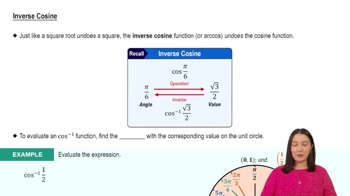Splitting up curves The unit circle x² + y² = 1 consists of four one-to-one functions, ƒ₁ (x), ƒ₂(x) , ƒ₃(x), and ƒ₄ (x) (see figure) <IMAGE>.
a. Find the domain and a formula for each function.
 Verified step by step guidance
Verified step by step guidance Verified video answer for a similar problem:
Verified video answer for a similar problem:



 5:57m
5:57mMaster Graphs of Common Functions with a bite sized video explanation from Patrick
Start learning